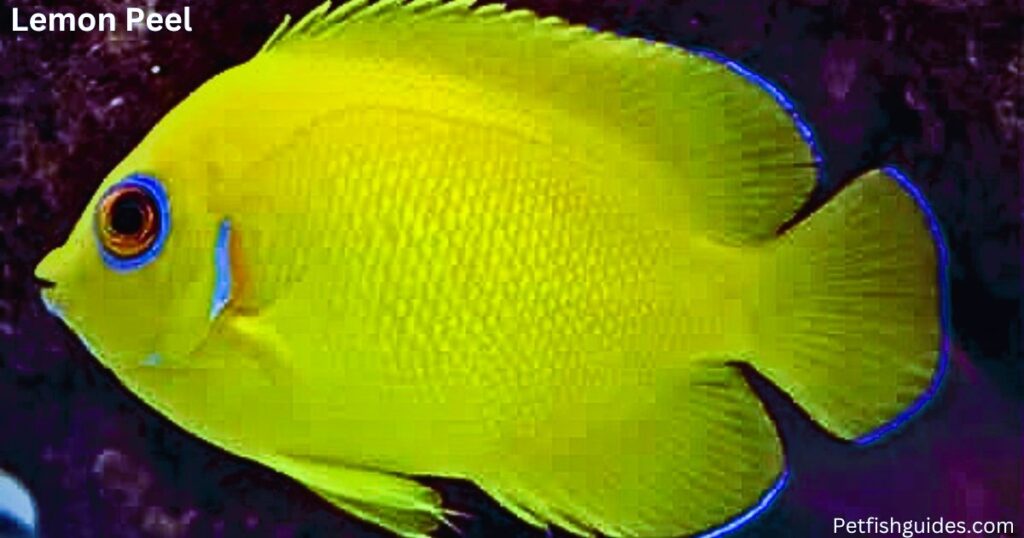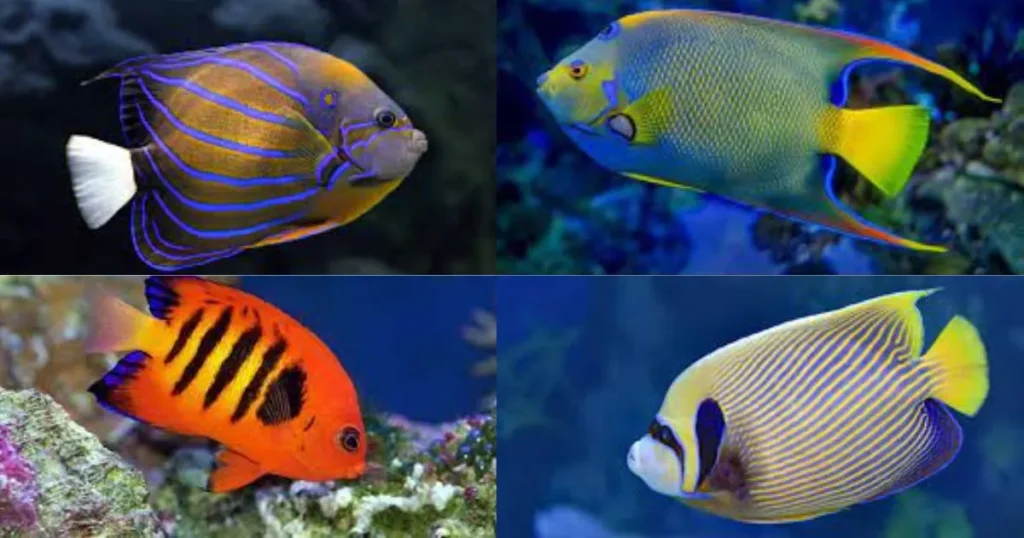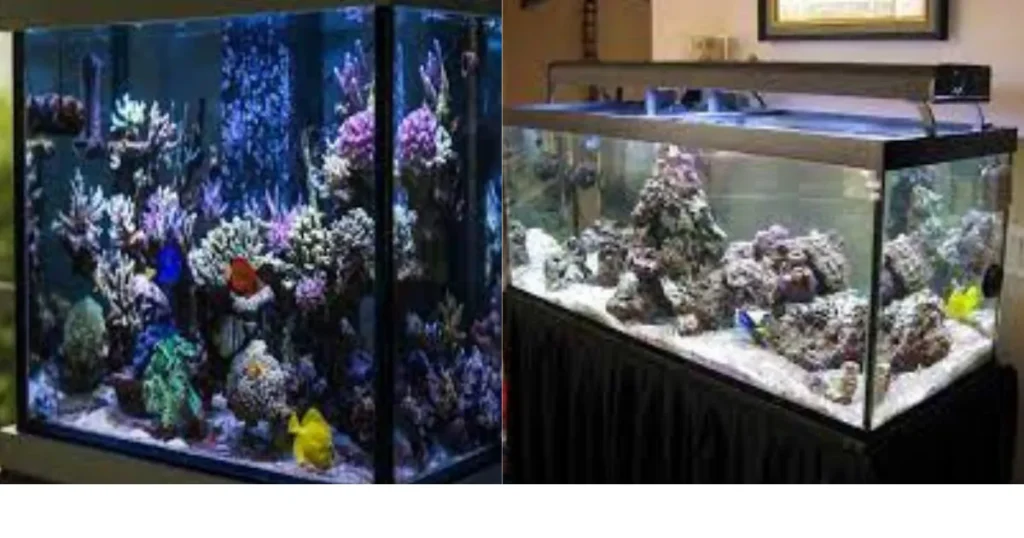Introduction.
Saltwater angelfish have become extremely popular additions to marine aquariums over the years. With their bright colors, unique shapes, and active behaviors, it’s easy to see why angelfish are so commonly kept by aquarists. However, there are some important things to know about the different species, maximum sizes, and tank requirements of saltwater angelfish before acquiring one. This beginner’s guide covers key information on angelfish species, size, and ideal tank conditions to help you be prepared to keep healthy, thriving saltwater angelfish.

To start, it’s helpful to understand why species, size, and tank factors matter for successfully keeping saltwater angelfish. There are over 80 recognized species of angelfish found in tropical and subtropical oceans worldwide. Species can vary quite a bit in appearance, behaviors, geographic distribution, and adult sizes. Additionally, most species undergo dramatic changes in coloration and growth as they mature. Finally, angelfish need ample swimming room, specialized diets, and precise water conditions to thrive in captivity. By learning about the most common species, typical sizes, and recommended tanks, you’ll be better equipped to select the right angelfish for your system.
Different Types of Saltwater Angelfish Species.
One of the exciting aspects of keeping saltwater angelfish is the wide variety of species available. Some of the most popular saltwater angelfish species kept by home aquarists include

- Blue Angelfish – One of the most commonly kept species, the blue angelfish (Holacanthus bermudensis) is native to the Western Atlantic. It has electric blue and yellow coloring with black bands. A nimble swimmer that grazes on algae.
- Queen Angelfish – Named for their majestic, flowing fins, the Queen Angelfish (Holacanthus ciliaris) is found in the Western Atlantic. Juveniles are blue and yellow until maturing to a blue, yellow, and white color pattern.
- French Angelfish – Found in the Western Atlantic, the French Angelfish (Pomacanthus paru) is a favorite for its intricate black, white, and yellow striped pattern. It has an oval compressed body shape.
- Emperor Angelfish – Native to the Indo-Pacific region, the emperor Angelfish (Pomacanthus imperator) has striking concentric black, white, and blue rings. A large, active swimmer that needs ample space.
- Lemonpeel Angelfish – Found on reefs in the Indian and Pacific Oceans, the lemonpeel angelfish (Centropyge flavissima) gets its name from the bright yellow coloring offset by a royal blue face and fins. One of the smaller species.
- Regal Angelfish – The regal angelfish (Pygoplites diacanthus) has a large, flat body shape and grows over 18 inches long. It has vivid blue and yellow horizontal bands and is found in Indo-Pacific waters.
- African Pygmy Angelfish – One of the smallest species, the African pygmy angelfish (Centropyge acanthops) remains under 4 inches long and is found around islands in the Indian ocean.
- Koran Angelfish (Pomacanthus semicirculatus) – The Koran angelfish inhabits reefs in the Red Sea and Indian Ocean. It has a light blue body with yellow fins and a distinctive black semicircle mark on its forehead. Grows to 14 inches long. Requires a 120+ gallon tank. A dramatic-looking species for experts.
- Blueface Angelfish (Pomacanthus xanthometopon) – Found in the Indo-Pacific, the blue face angelfish has a vibrant blue face and front body with yellow/orange rear. It grows over 16 inches and requires a minimum 150 gallon tank. A stunning large angelfish for experienced aquarists.
There are also plenty more unique species like the regal angelfish, coral beauty angelfish, and African pygmy angelfish. When selecting a species, it’s important to research the natural habitat, behaviors, diet, and requirements to ensure your system can meet its needs. Consulting with your local aquarium store can help match you with species suitable for your setup.
Reference: Liveaquaria.
Overview of Saltwater Angelfish Sizes
In addition to variation in species, saltwater angelfish also differ significantly in their maximum adult sizes. Here’s an overview of typical size ranges:
- Juveniles – Most angelfish species are under 3 inches when they first transition from their larval stage to juveniles. At pet stores, angelfish are generally sold when they reach juvenile size and begin showing their species’ characteristic coloration.
- Small Species – Some species, like the pygmy angelfish and lemon peel angelfish, retain a small size even as adults. They usually max out at 5-7 inches in length. Female angelfish are often slightly larger than males.
- Medium Species – Intermediate-sized species like the French angelfish, blue angelfish, and coral beauty angelfish normally reach lengths of 7-10 inches at maturity.
- Large Species – The emperor angelfish, queen angelfish, and other big species can grow to 12 inches or longer as adults. The regal angelfish is one of the biggest at up to 18 inches in length.
- Growth Rate – It takes 2-6 years for most angelfish to reach their maximum size, depending on species and care. Provide proper nutrition and tank space to facilitate good growth.
- Factors Affecting Size – An angelfish’s size is primarily determined by its genetics. However, factors like diet, tank size, water quality, and competition for resources can also influence growth rate and overall size.
It’s critical to research the adult size of any angelfish species you’re considering so your tank can accommodate its ultimate length. A too-small tank will stunt growth and cause stress. Pay extra attention to maximum sizes if you’ll be keeping multiple angelfish together in one tank.
Ideal Saltwater Angelfish Tank Size & Tank Requirements
One of the most important aspects of successfully keeping saltwater angelfish is providing an appropriate aquarium setup. Here are the key tank requirements to meet:

- Minimum Tank Size – For one angelfish, a minimum 55-gallon tank is recommended. Bigger is always better, as angelfish are active swimmers. For each additional average-sized angelfish, add around 20 gallons. Larger species need bigger tanks, like 180+ gallons for emperor angelfish.
- Swimming Space – Length is more important than height or width, as angelfish needs a continuous straight swimming room. Make sure any rockwork or decor doesn’t impede their ability to swim freely.
- Water Flow – Moderate water movement provided by powerheads and pumps is preferred. The larger the tank, the more flow is needed for adequate oxygenation.
- Water Parameters – Maintain water temperature between 72-78°F. Specific gravity should be 1.020-1.025 and pH 8.1-8.4. Perform regular water testing and changes.
- Filtration – Canister filters or sumps that handle at least 4-5 tank volume turnovers per hour are recommended to keep water clean. Provide adequate biological, mechanical, and chemical filtration.
- Tankmates – Many angels are peaceful but territorial toward other angelfish. Avoid aggressive species. Some safe tankmates include tangs, triggers, large wrasses, puffers, grunts, and damsels.
- Decor – Angelfish appreciate ample open swimming space, caves, overhangs, and planted areas for refuge. Include plenty of live rock. The substrate can be live sand or crushed coral.
Following these saltwater angelfish tank guidelines will help recreate their natural coral reef environment. Be sure to allow the tank to fully cycle before adding any fish. Patience is important, as even 75-120 gallon tanks require maturity before being ready for inhabitants.
Diet and Feeding Saltwater Angelfish
In the wild, most angelfish species feed primarily on sponges and algae. Their natural diets are mainly herbivorous. However, many will eat meaty items like shrimp if trained in captivity. Here are some diet and feeding tips:
- Algae – Provide plenty of marine-sourced algae to graze on, including live rock coated in purple coralline algae. Can also offer seaweed preparations.
- Sponges – Sponge replicas and frozen sponge cubes make ideal feeding items. But take care, as some natural sponges can be toxic.
- Prepared Foods – Quality angelfish pellets, flakes, sheets, and marine veggies offer balanced nutrition. Look for reputable brands. Soak initially.
- Meaty Additions – Though not required, many enjoy occasional brine shrimp, mysis shrimp, plankton, mussels, and marine omnivore gel cubes.
- 2-4 Small Meals Daily – Feed juveniles 2-3 times daily. Adults can eat 4 lighter meals. Only feed amounts they can consume within a few minutes.
- Target Feeding – Use feeding sticks or tongs to target food directly in front of each angelfish’s face when keeping multiple fish together.
- Supplements – Add vitamins and amino acid supplements to food a few times a week. Boost nutrition and color.
With proper, varied diets, most saltwater angelfish adapt well to aquarium life. Pay attention to each fish’s appetite and preferences, and adjust food accordingly for health and growth.
FAQs
Q: How long do saltwater angelfish live?
A: In ideal aquarium conditions, most species live 10-15 years on average. Some smaller species may exceed 20 years.
Q: Are saltwater angelfish omnivorous?
A: No, marine angelfish are not naturally omnivorous. In the wild, they feed mainly on algae, sponges, and encrusting reef organisms. While they can be trained to eat some meaty foods in captivity, their physiology is best suited for a primarily herbivorous diet.
Q: Are saltwater angelfish aggressive?
A: For the most part, no. Most saltwater angelfish species are peaceful community fish when kept with appropriate tank mates and provided adequate space. They do not normally show significant aggression. However, they can become territorial toward other angelfish of the same species. It’s best to only keep one individual per species. Overall, their peaceful nature makes saltwater angelfishes great reef-safe additions to marine aquariums when proper compatibility and tank size are maintained to limit aggression.
Q: Can you keep different kinds of angelfish together?
A: It’s generally best to avoid mixing multiple angelfish species unless you have a very large tank. Even then, monitor for aggression.
Q: Does saltwater angelfish need live rock?
A: Yes, live rock provides essential biological filtration and also replicates their natural rocky coral reef habitat.
Q: Are saltwater angelfish reefs safe?
A: Most species do not disturb corals or other reef inhabitants. However, some may nibble on sessile invertebrates.
Q: How much does saltwater angelfish cost?
A: Depending on the species, expect $30-$300 or more for juveniles purchased from pet stores. Rarer species cost considerably more.
Conclusion
Successfully keeping saltwater angelfish requires understanding key differences across the wide variety of species in terms of size, behaviors, and needs. It also means setting up an established, mature marine aquarium that gives angelfish adequate room to thrive and proper water conditions. While saltwater angelfish do require more specialized care than freshwater species, they can make stunning, engaging additions to tanks given their beautiful colors, graceful movements, and unique personalities once their needs are met. Hopefully, this beginner’s guide provides helpful information on species selection, maximum growth sizes, ideal tank setup, diet, and other essentials for keeping healthy angelfish. Please let me know if you have any other questions!
Additional Resources:
A. For more information on successfully keeping saltwater angelfish, check out these useful marine aquarium resources:
- Saltwater Angelfish – LiveAquaria
- Angelfish Species Profiles – REEF2REEF Saltwater Fish Forum
